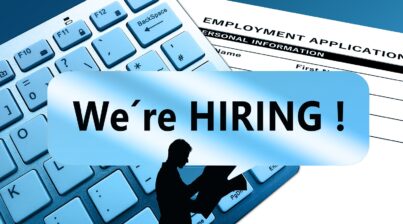As HR professionals – especially recruiters – you want to ensure you’re hiring the best person for each open position. How do you know? What can you do? So, we invited Ana Recio, SVP of Talent at SoFi onto one of our podcast episodes to discuss how to know if you’re hiring the best person. Let’s first start with finding out more about SoFi.
What Is SoFi?
In August of 2011, Social Finance, Inc. (SoFi) was founded by Stanford business school students. SoFi’s first priority is putting their members first. It is a unique kind of finance company that focuses on helping people get their money right. They build their products around their members’ needs to take control of their finances.
In May 2012, SoFi introduced Student Loan Refinancing. SoFi became the first company to refinance federal and private student loans. In October 2014, SoFi launched mortgages and in 2015 they began offering personal loans. In September of 2016, SOFI announced their SoFi at Work program to offer employee benefits such as student loan contributions and refinancing. Fast forward to today, and SoFi shares these impressive stats:
Source: https://www.sofi.com/our-story/
Who Is Ana Recio?
I had a wonderful time chatting with Ana Recio on our podcast. Here’s a little bit of information about Ana’s background and present role.
I asked Ana how she ended up in the wonderful world of HR. As a college graduate, Ana didn’t have immediate plans for a job or career. Interestingly, she indicated it was “dumb luck” how she fell into the HR industry by starting out in recruiting. She’s worked with some well-known organizations, including DELL, Yahoo!, Salesforce, and SoFi.
Ana’s current role is SVP of Global Talent: Recruiting, DE&I, Talent Management, Learning & Development, and Experience. She is responsible for driving employee engagement through the entire employee lifecycle starting from employer brand, assessment, engagement, development, promotion, and retention. Ana develops strategies that focus on talent attraction and talent engagement at scale, with DE&I and Learning & Development at the center of her approach.
Now, let’s dig into the topic of the podcast…
What Does “The Best Person” Mean?
First, you need to have a good sense of what great looks like in your organization. It correlates back to who are the people and profiles within your organization that are thriving and innovating. This varies by organization, but the important thing is to take it as an opportunity to really identify the variables that lead to a successful hire. Then you can develop efficiencies and measurables to hire for. These variables are what your recruiters need to think about and focus on.
Let’s look at a real-life sales example.
There was an organization I worked with that had a sales environment that only wanted to hire from two marquee companies. But they needed to broaden their view. Maybe those are the two best companies to hire top performers from, but why? What made them the best?
We looked at variables across the entire sales department, such as:
- Who were the highest performing sales individuals?
- What accounts were they landing?
- How long did it take them to attain new customers?
Then we honed in on and assessed what made them really strong performers. What we found was enlightening:
- Of the top 100 salespeople, only 28% came from the two marquee companies
- The #1 variable that led to success was pace
- Top individuals were heavy users of technology, and all came from an environment of solution training approach
Once we understood the profile, we built out specific competencies that assessed for those particular attributes. Then we had to find champions in the organization that would be willing to hire outside of the two marquee companies. The results we experienced were that we started hiring faster and better.
Key Takeaways:
- Align and define what great looks like – beyond the job description
- Conduct analysis to understand variables
- Gain agreement on what a superstar looks like
- Use tools that automate this assessment work
This effort will drive efficiency in how you recruit.
Discover More
There’s much more we cover in the podcast, such as:
- Is it always the best practice to use past performance to project future performance?
- Who should conduct the analysis of competencies required for job positions?
- How does HR data and analytics play a role in recruiting?
- What is meant by “quality of hire” when measuring performance and setting baselines?
Listen to the whole podcast here: How to know if you’re hiring the best person
It’s a quick 22 minutes and is packed full of useful information that you can start putting into practice right away!












